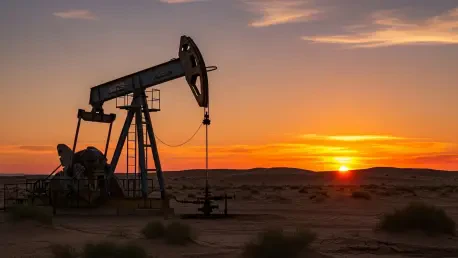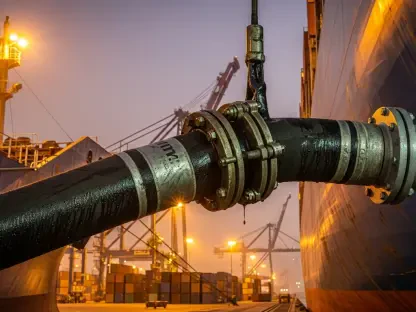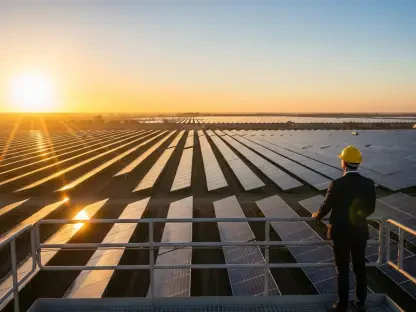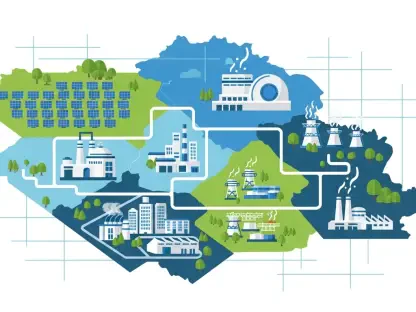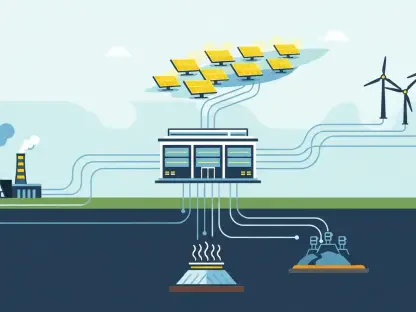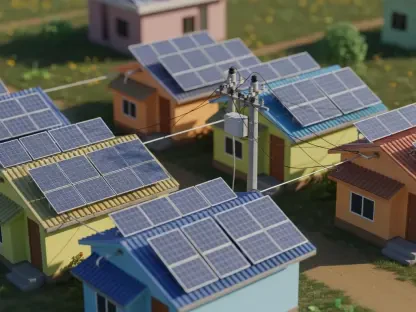Welcome to an insightful conversation with Christopher Hailstone, a seasoned expert in energy management and international oil markets. With his deep knowledge of grid reliability, renewable energy, and the complexities of global oil trade, Christopher offers a unique perspective on the latest developments in Venezuela’s oil sector. Today, we’ll explore the recent decline in Venezuela’s oil exports, the impact of U.S. sanctions and authorizations, and the intricate dynamics of Venezuela’s trade relationships, particularly with key partners like China and Cuba. Join us as we unpack these critical issues and their implications for the global energy landscape.
How would you describe the key factors behind the recent 10% decline in Venezuela’s oil exports from June to July?
Well, the drop to an average of 727,000 barrels per day in July from 807,000 the previous month is tied to a combination of operational and geopolitical challenges. A major factor is the uncertainty surrounding U.S. authorizations for PDVSA’s partners. Without clear permissions to expand operations, many companies have had to scale back or pause their activities, directly impacting export volumes. Additionally, logistical bottlenecks and ongoing sanctions-related constraints continue to hamper Venezuela’s ability to maintain consistent output and shipping schedules.
What role has the lack of U.S. authorizations played in this export downturn for PDVSA’s partners?
The absence of U.S. authorizations has been a significant roadblock. Many of PDVSA’s international partners rely on these permissions to legally operate and export Venezuelan crude, especially to markets like the U.S. Without them, companies face legal and financial risks, leading to suspended or reduced operations. This creates a ripple effect—less activity means fewer exports, and it exacerbates Venezuela’s already strained economic situation since oil is their primary revenue source.
Can you explain what the new U.S. license for Chevron means for their operations in Venezuela?
The license issued in late July is a game-changer for Chevron. It allows them to resume operations and export crude to the U.S., albeit under strict conditions. Notably, the license prohibits any direct payments to President Nicolas Maduro’s administration, which aims to prevent funds from supporting the government while still enabling some economic activity. For Chevron, this means they can restart exports, even if in limited amounts initially, and potentially regain a foothold in the Venezuelan market after months of uncertainty.
Why do you think other PDVSA partners are still waiting for similar U.S. permissions?
It comes down to a mix of political and strategic considerations. The U.S. is treading carefully with its sanctions policy, balancing the need to pressure the Venezuelan government with the desire to stabilize energy markets. Issuing licenses to companies like Chevron might be seen as a test case—Washington wants to monitor the outcomes before extending similar privileges to others. Additionally, each company’s relationship with PDVSA and their compliance history likely plays a role in the delay as the U.S. evaluates potential risks.
How are Chevron’s plans to resume exports unfolding, especially with their CEO’s mention of a ‘limited amount’ this month?
Chevron’s CEO, Mike Wirth, signaled a cautious approach by mentioning exports in a ‘limited amount.’ This likely reflects both the restrictions of the new license and the operational challenges they’ve faced since exports were halted in April. They’re probably starting with smaller shipments to test the waters—ensuring compliance with U.S. rules and sorting out logistical hurdles. It’s a pragmatic way to rebuild confidence with both PDVSA and U.S. regulators while scaling up over time if conditions allow.
What challenges has Chevron faced with Venezuelan exports, particularly around payment issues?
Payment problems have been a persistent thorn in Chevron’s side, largely due to U.S. sanctions. Since April, exports were suspended because PDVSA canceled cargoes over unresolved payment disputes tied to sanctions that limit financial transactions. The inability to make direct payments to the Venezuelan government or navigate alternative mechanisms has created a deadlock. It’s a complex issue—Chevron needs to settle debts and secure revenue, but the sanctions framework makes traditional transactions nearly impossible.
Can you shed light on the new off-taking mechanism Chevron is negotiating with PDVSA and how it might work?
This new mechanism is an innovative workaround to the payment restrictions. From what we understand, Chevron and PDVSA are exploring a system where mandatory royalties and taxes owed to Venezuela would be paid in kind—meaning through crude oil allocations or oil swaps. Chevron might supply diluents, which are crucial for processing Venezuela’s heavy crude, in exchange for a portion of the produced oil. It’s a barter-like arrangement that sidesteps direct cash payments, aligning with U.S. sanctions while keeping operations viable.
Looking at Venezuela’s export figures for July, what stands out about the dominance of China as a destination for 95% of their oil?
The fact that 95% of Venezuela’s oil exports went to China in July underscores a dramatic shift in their trade patterns, driven by necessity. With U.S. and European markets largely closed off due to sanctions, China has become a lifeline for Venezuelan crude. This reliance reflects both Beijing’s willingness to engage despite Western restrictions and Venezuela’s desperate need for buyers. It’s a double-edged sword—while it keeps some revenue flowing, it also limits Venezuela’s bargaining power and ties their economy heavily to one partner.
How does Venezuela’s oil relationship with Cuba fit into their broader export strategy?
Venezuela’s support for Cuba through oil shipments is deeply rooted in political alliance. In July, Cuba received about 31,000 barrels per day of crude, gasoline, and jet fuel, which is critical for their energy-starved economy. This isn’t just trade—it’s a strategic move to maintain a key regional ally amid Venezuela’s own struggles. These shipments, though a small fraction of total exports, signify Caracas’ commitment to ideological partnerships, even when their own resources are stretched thin.
What is your forecast for the future of Venezuela’s oil exports given the current sanctions landscape and market dynamics?
Looking ahead, I think Venezuela’s oil exports will remain volatile unless there’s a significant shift in U.S. policy or global market conditions. The limited authorizations, like Chevron’s, offer a glimmer of hope for incremental growth, but without broader sanctions relief, many partners will stay on the sidelines. China’s dominance as a buyer will likely persist, though it could expose Venezuela to risks if Beijing’s demand fluctuates. Ultimately, the interplay between geopolitical negotiations and domestic production capacity will dictate whether exports stabilize or continue to falter in the coming months.
